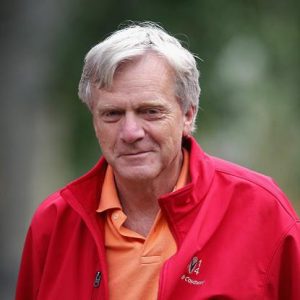Andy Bechtolsheim : German Electrical Engineer & a self-made Billionaire
Being a successful entrepreneur depends highly on an individual’s decision making and risk taking capability. Higher the risk, greater the reward. This has been said and written, over and over. If you read about businessmen, who are highly successful today, you will find the huge array of risks, these people have taken to reach where they are. Out of these risks, emerges many successful companies. A company that produces valuable products and employs thousands of people. One such risk taker, and now a billionaire, is Andy Bechtolsheim.
Early Life and Education
Andy was born on 30th September 1955, in Bavaria, Germany and was the second of the four children in the family. He spent the most of the time of his childhood between the electronics devices, as there was no television or children in the neighbour to play with. So he chose to keep himself busy and entertained with electronics.
At the age of 16, Andy designed an industrial controller that worked on Intel 8080. He programmed it in binary code as he didn’t have any access to assemblers. He made this controller primarily for a nearby company, who then further paid him royalties for the product. These royalties paid for Andy’s most of the education.

When Andy was attending the Technical University of Munich to pursue engineering, he entered the Jugend forscht contest that was organised for the young researchers. He kept participating in the contest for three years and finally, in the third year i.e. in 1974, he won the physics prize.
Andy, further, went to Carnegie Mellon University in the USA, after he received the Fulbright Award, in 1975. In 1976, at the same university, he received his master’s degree in Computer Engineering. Later, he went to the Stanford University to earn his PhD in electrical engineering, in 1977.
Early Career
While his time at Stanford, Andy came across the Xerox Alto computer, developed at Xerox Palo Alto Research Center. Inspired by this computer, he designed a powerful workstation, which had a built-in networking, named as SUN workstation (taken from the initials of Stanford University Networking). This workstation gained him free access to the researches at Xerox Palo Alto. During the same time, Lynn Conway was developing Very Large Scale Integration circuits (VLSI).
Birth of Sun Microsystems
The VLSI was developed on the workstation made by Andy. One such company called Daisy systems was also into building computers for the VLSI design. A man named Vinod Khosla worked at Daisy systems, who would soon partner with Andy. Khosla graduated from Stanford Graduate School of Business just a couple years earlier than Andy. He was good friends with his classmate Scott McNealy who was the manager of manufacturing at Onyx Systems. These three people came together and developed a business plan for their first company. They also received funding in no time from the venture capitalists in 1982.
Andy with three others was joined by Bill Joy as the fourth member responsible for the development of BSD series of Unix OS. In the earlier days, Andy and Joy shared an apartment in Palo Alto. Sun Microsystems launched their first product named Sun-1. It included Stanford CPU board design with expanded memory and a protective metal sheet casing. The company went public in 1986 and reached $1 billion in sales by 1988. Andy also launched a cheaper desktop computer for educational market under his project SPARCstation. The computer was known as Campus.
Changing Companies.
He left Sun Microsystems in 1995, after working there for almost a decade. The same year he founded Granite Systems. A startup working to develop high-speed network switches. In 1966, when Andy owned about 60% of the company, Cisco acquired it for $220 million. After this deal, he also acquired the position of Vice President and General Manager of Cisco’s Gigabit Systems Business Unit.
After working for 8 years at Cisco, he left the job in 2003 and took the head position in Kealia, Inc. This was the company that Andy had founded back in 2001 along with a Stanford Professor named David Cheriton, also a partner in Granite Systems. Kealia worked on developing advanced server technologies using the Opteron processor from Advanced Micro Devices.
Andy was soon going to go back to where he started from. In the February of 2004, Sun Microsystems acquired Kealia, Inc., and Andy took the position of Vice President and Chief Architect in the company. He founded yet another company named Arastra which was renamed as Arista in 2005. The company was focused on developing high-speed networking. He left Sun and took Chairman and Chief Development Officer in Arista in October 2008.
Investment in Google
In the September of 1998, Andy and Cheriton decided to invest in the emerging search engine company Google. Both invested around $100,000 even before the company was founded and legally incorporated. His investment is now worth $1.6 billion.
Andy is known as the most successful investors in the electronics sector. He also invested in Magma Design Automation. His stake is valued at $60 million. He has invested in a number of startups and has been successful every time.
Achievements
Andy received the Smithsonian Leadership Award for Innovation in 1999. He also received Stanford Entrepreneur Company of the Year award. He is a member of the National Academy of Engineering.
Personal Life
Andy is not married and has not taken US citizenship. He continues to be a German and does not intend to change it. He lives in Palo Alto, California, US.

Harshal Pawar is an avid reader, a TV show addict, and a writer. He has a personal blog brainwork.wordpress.com where he jots down his articles and poetry about love and life.
He is currently pursuing film-making and wishes to bring the words written on a paper to the screen. More of all he is a scorpio.